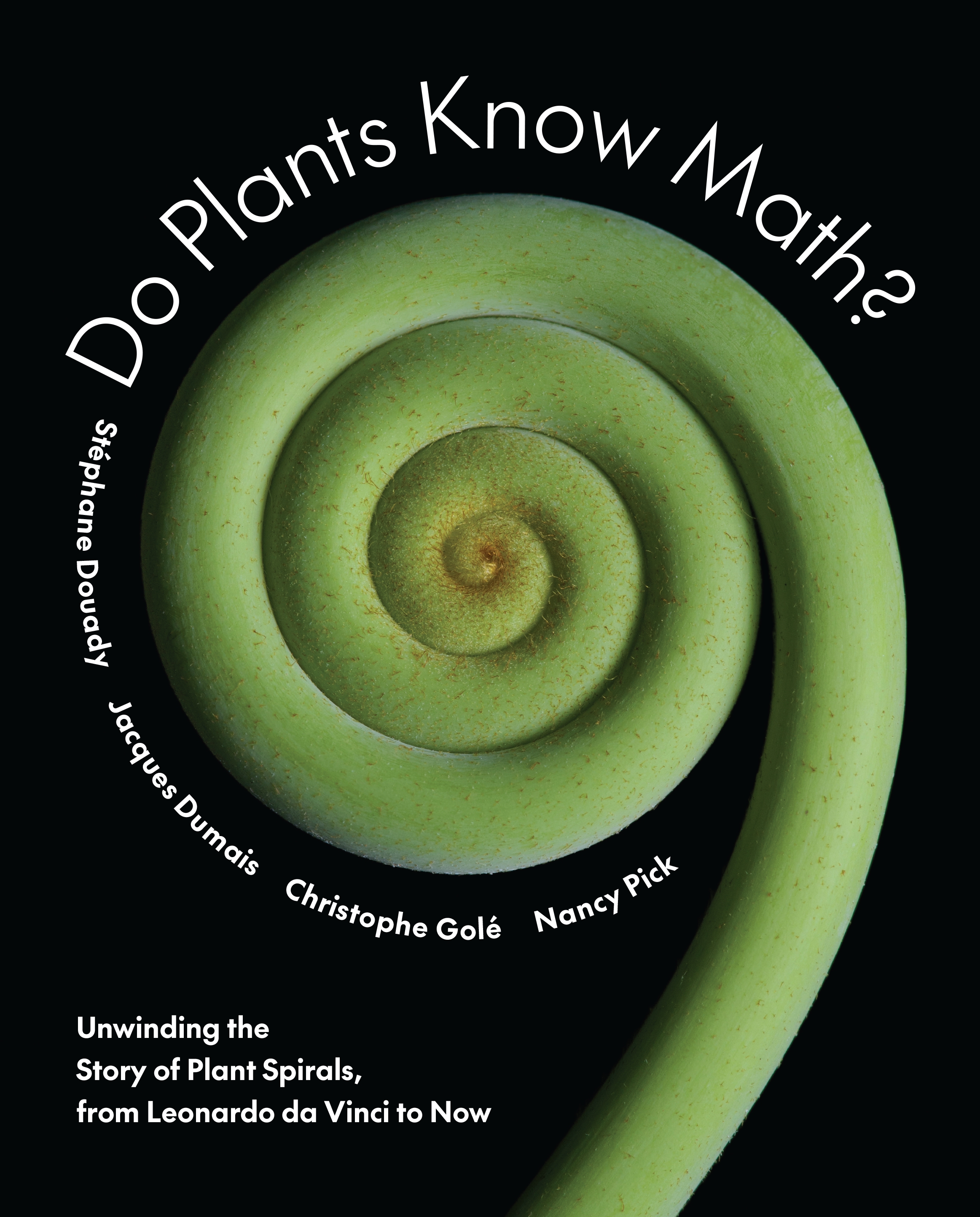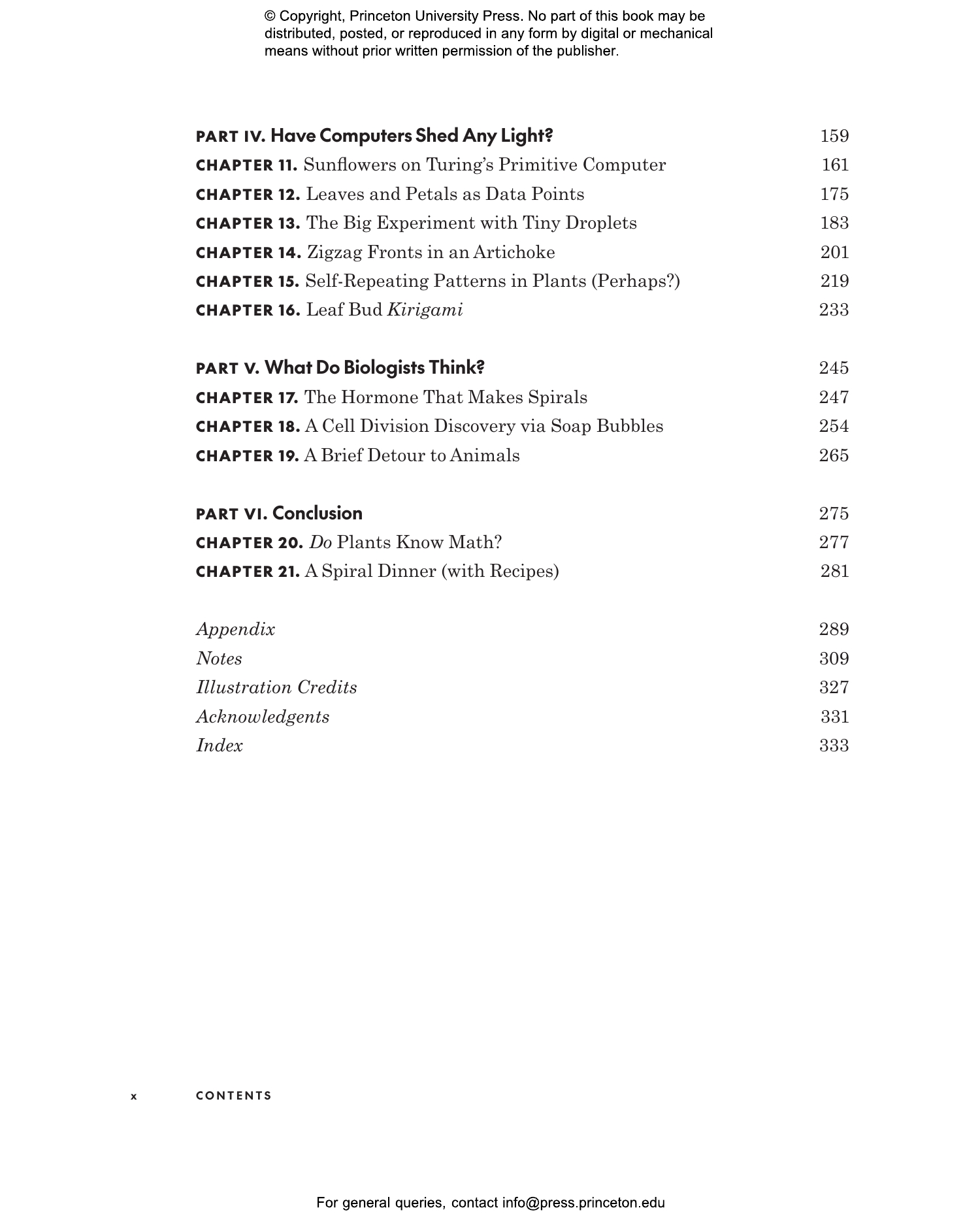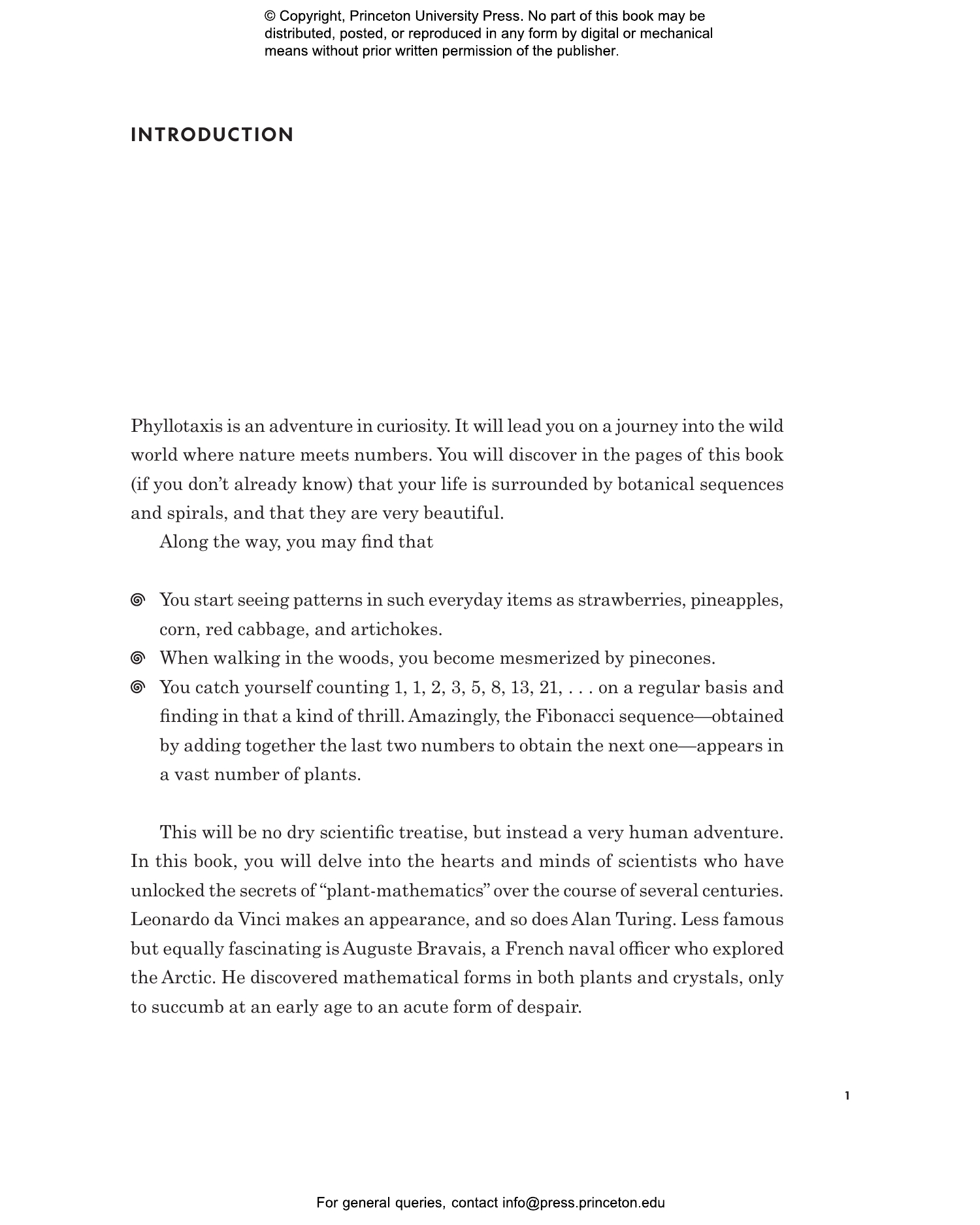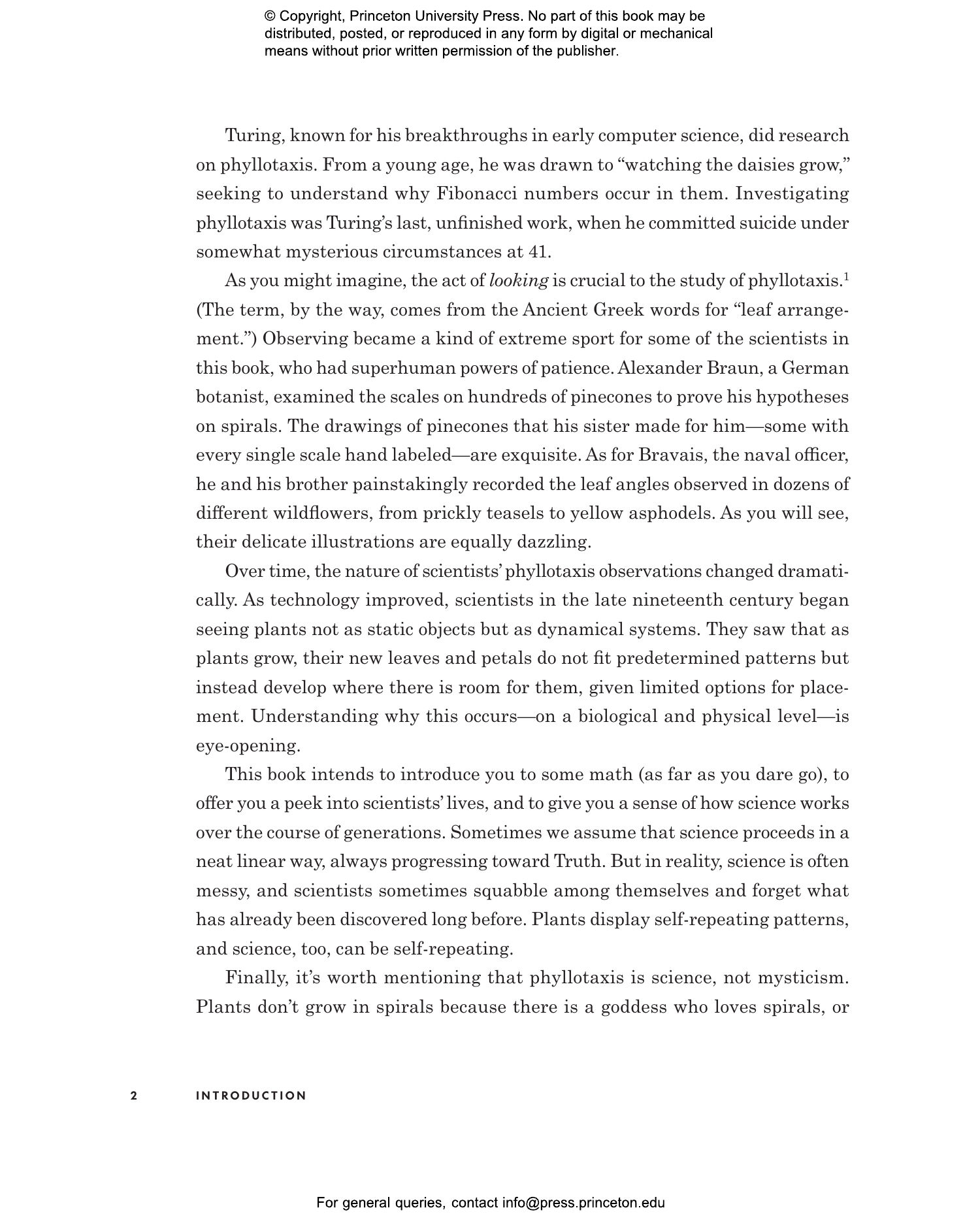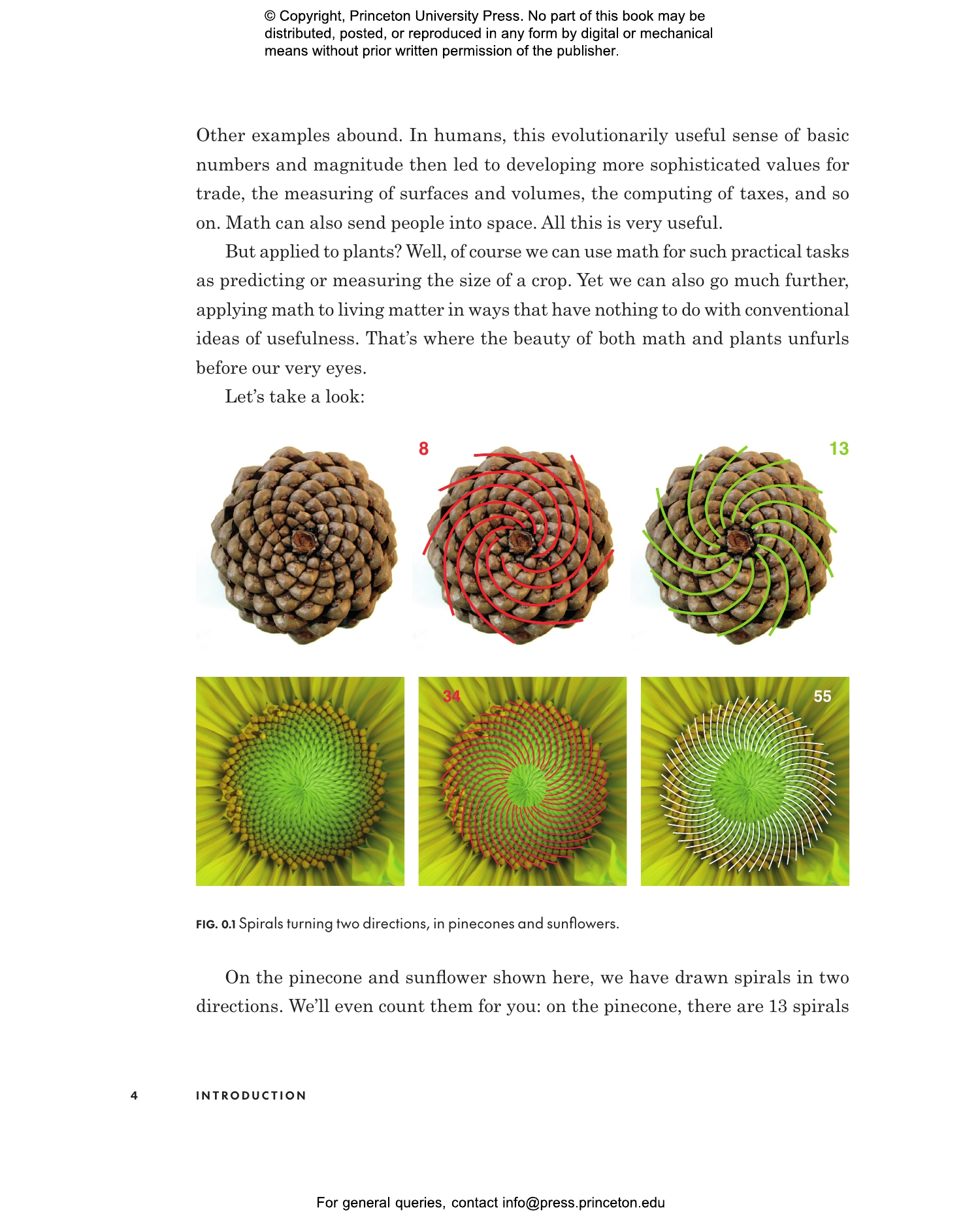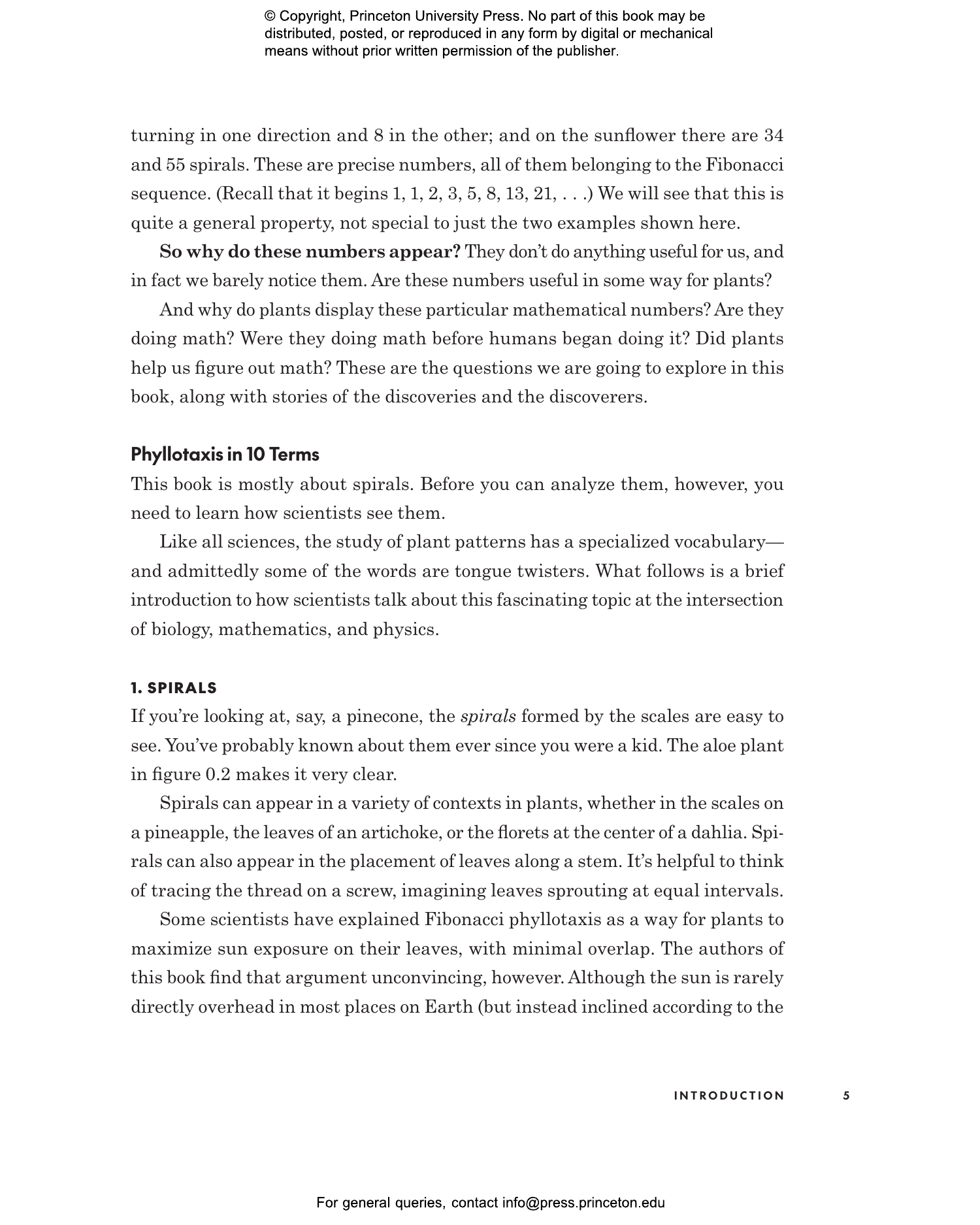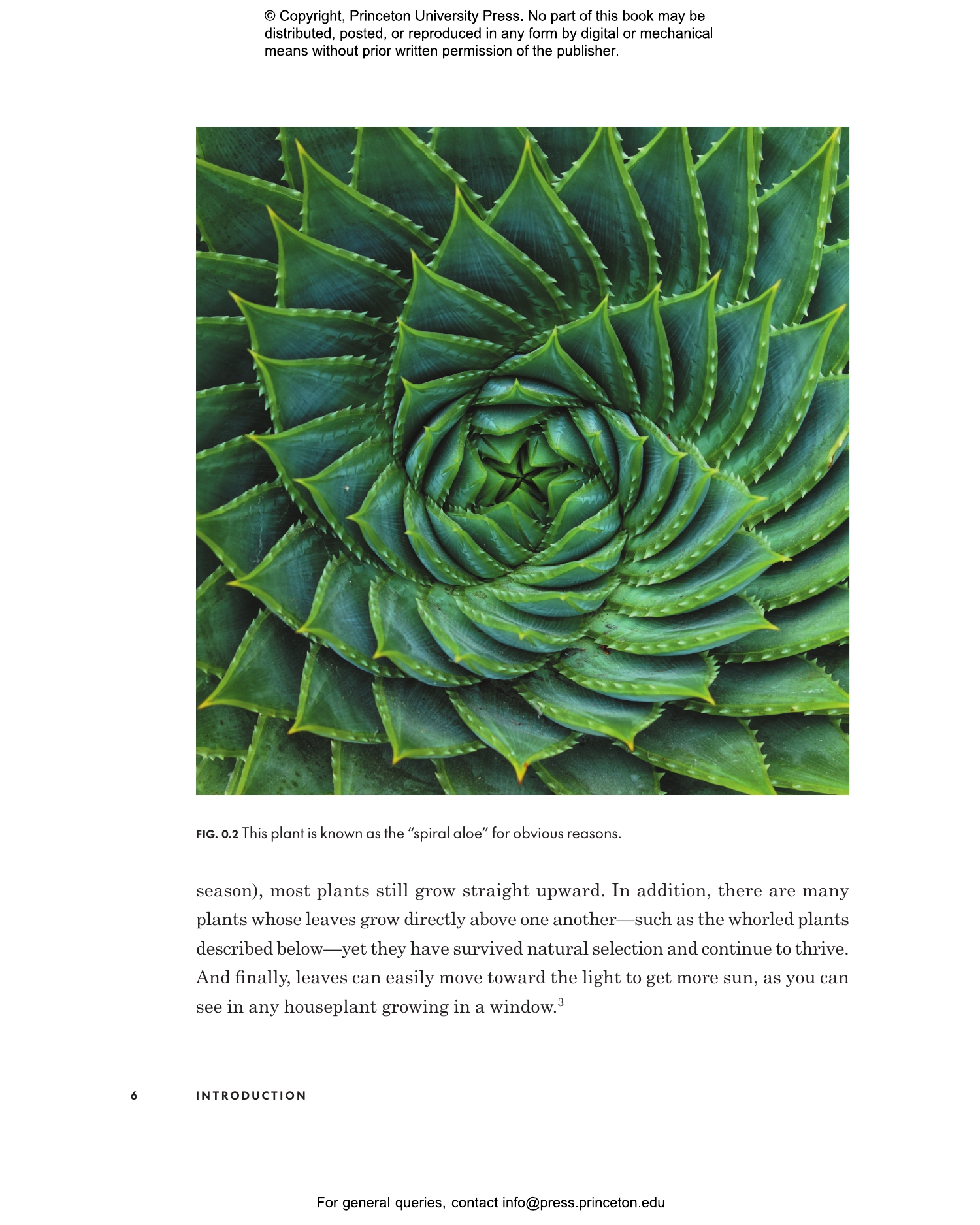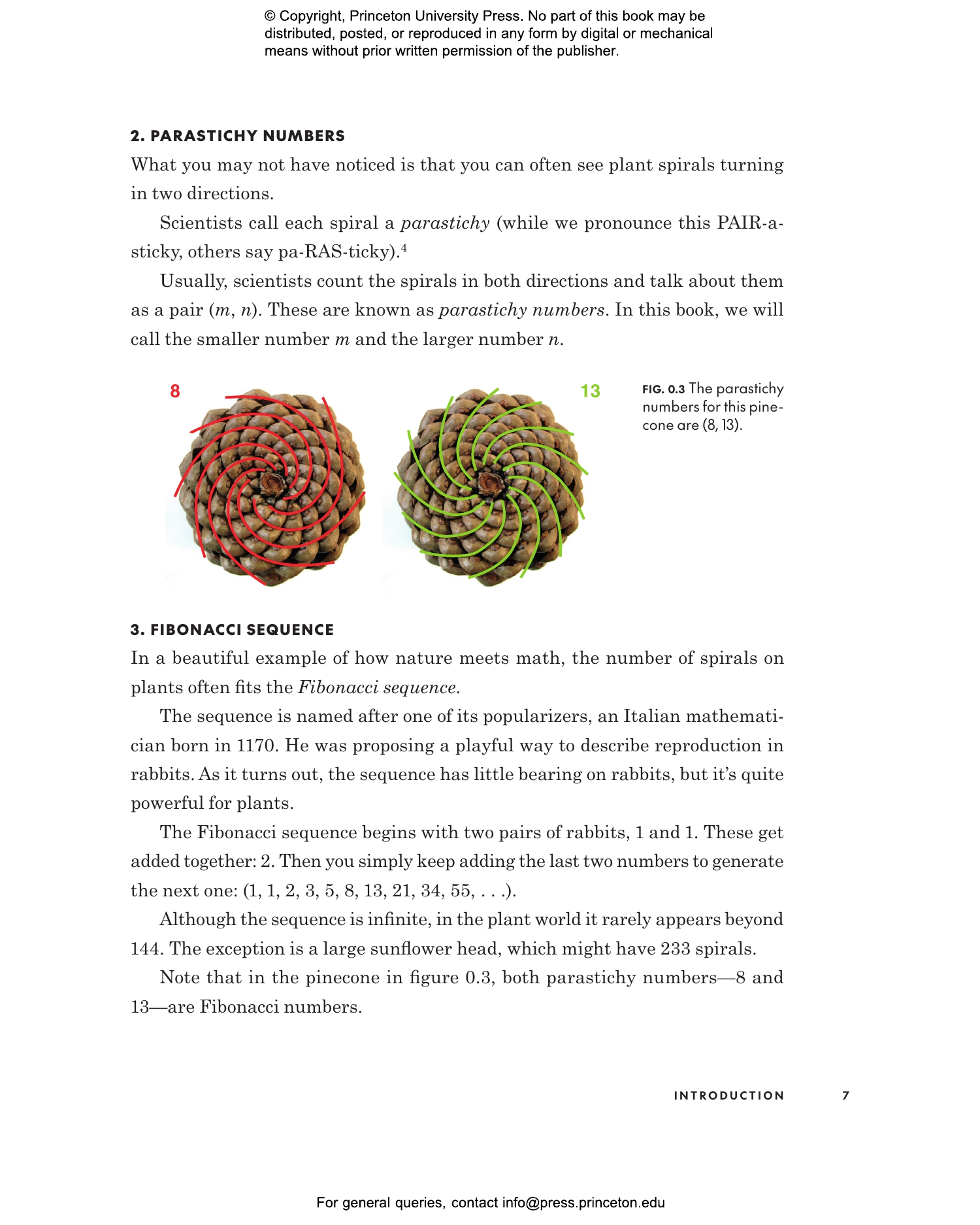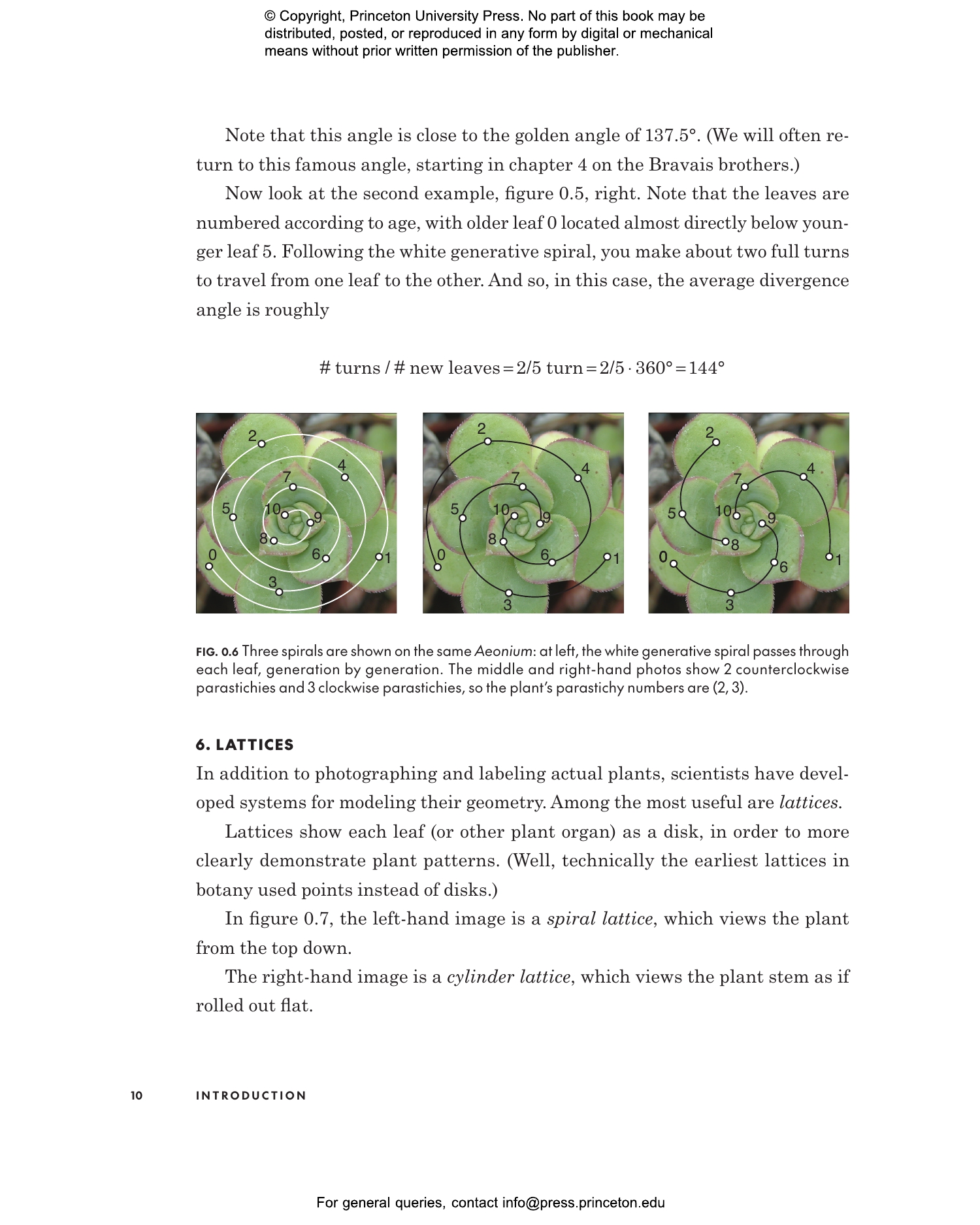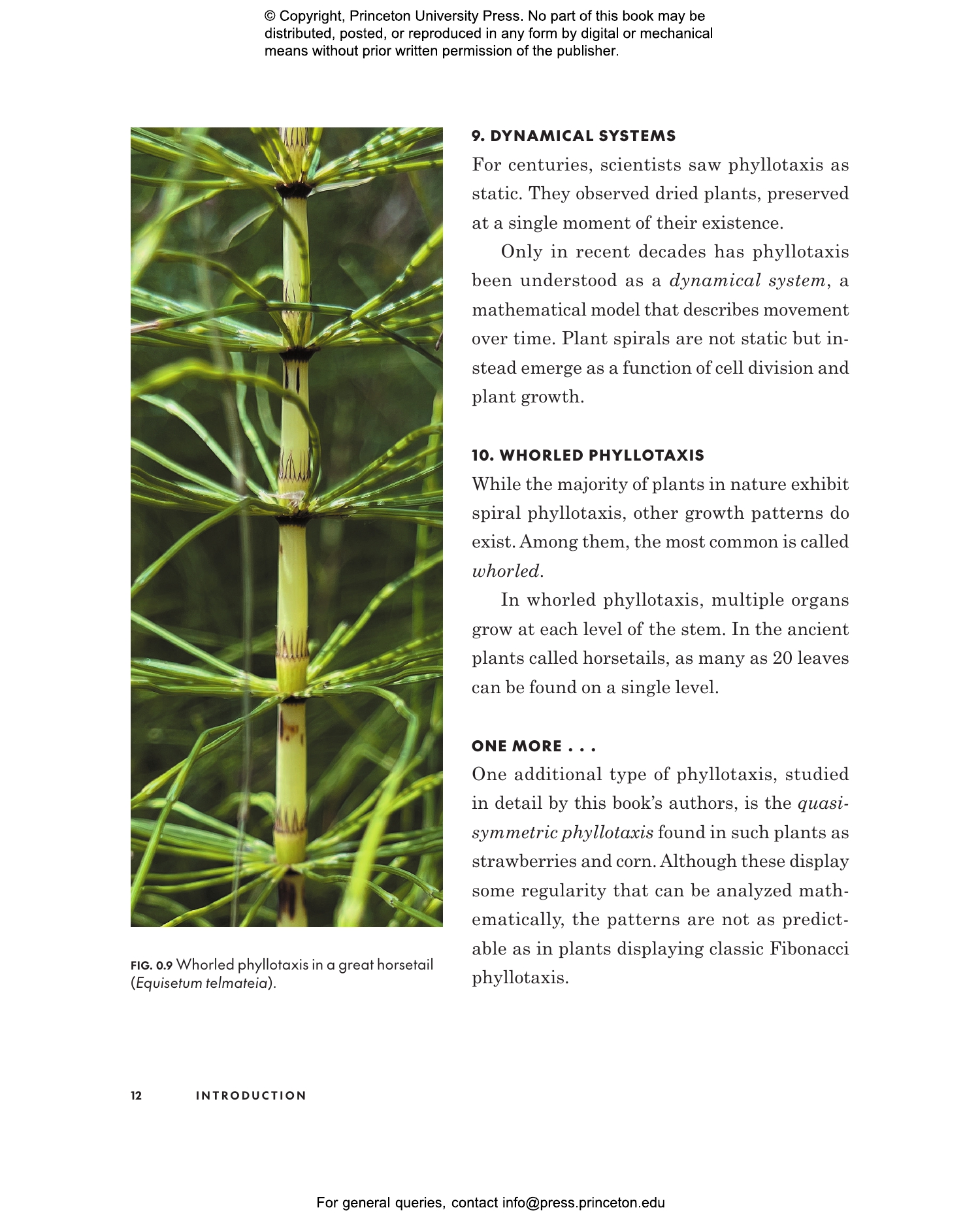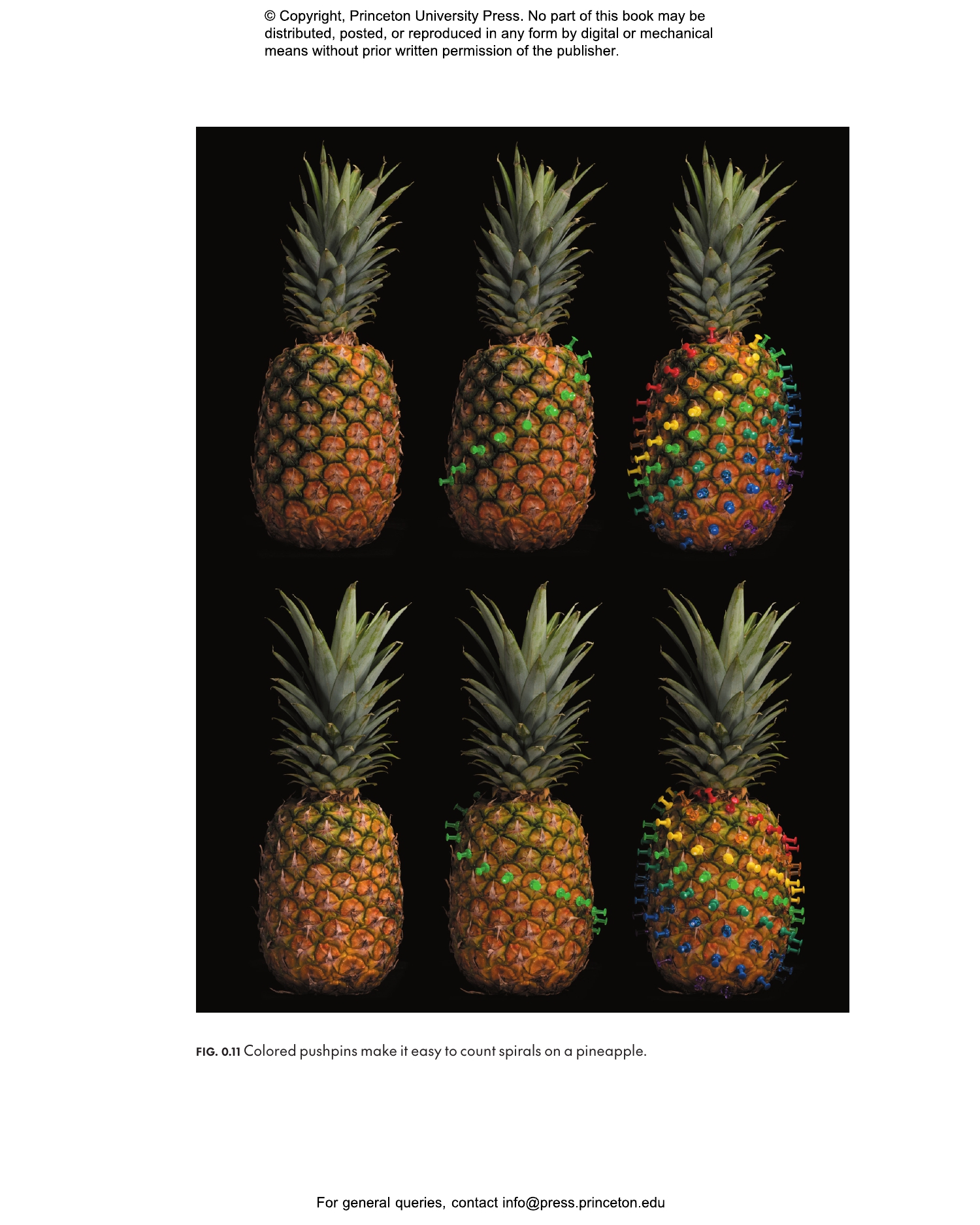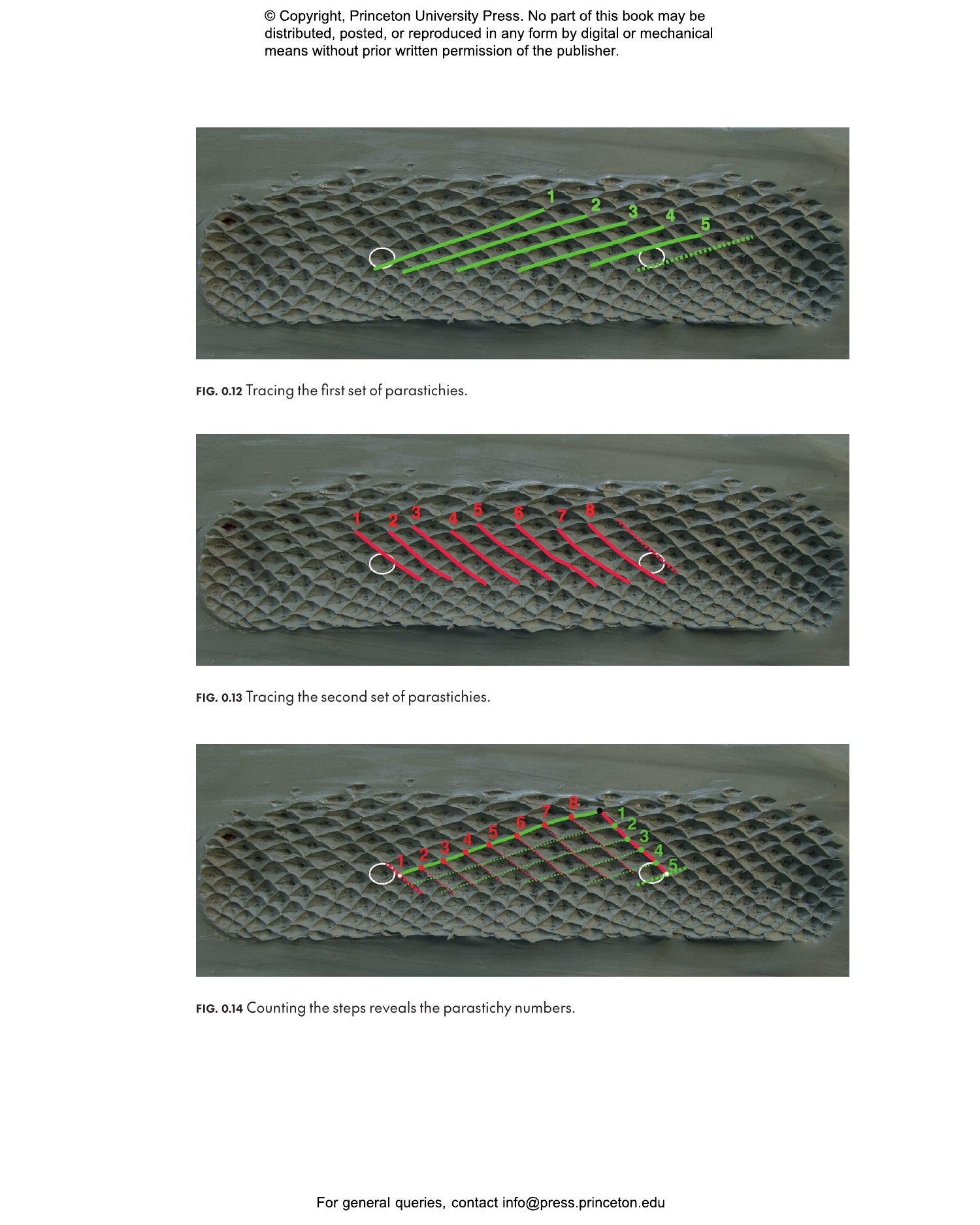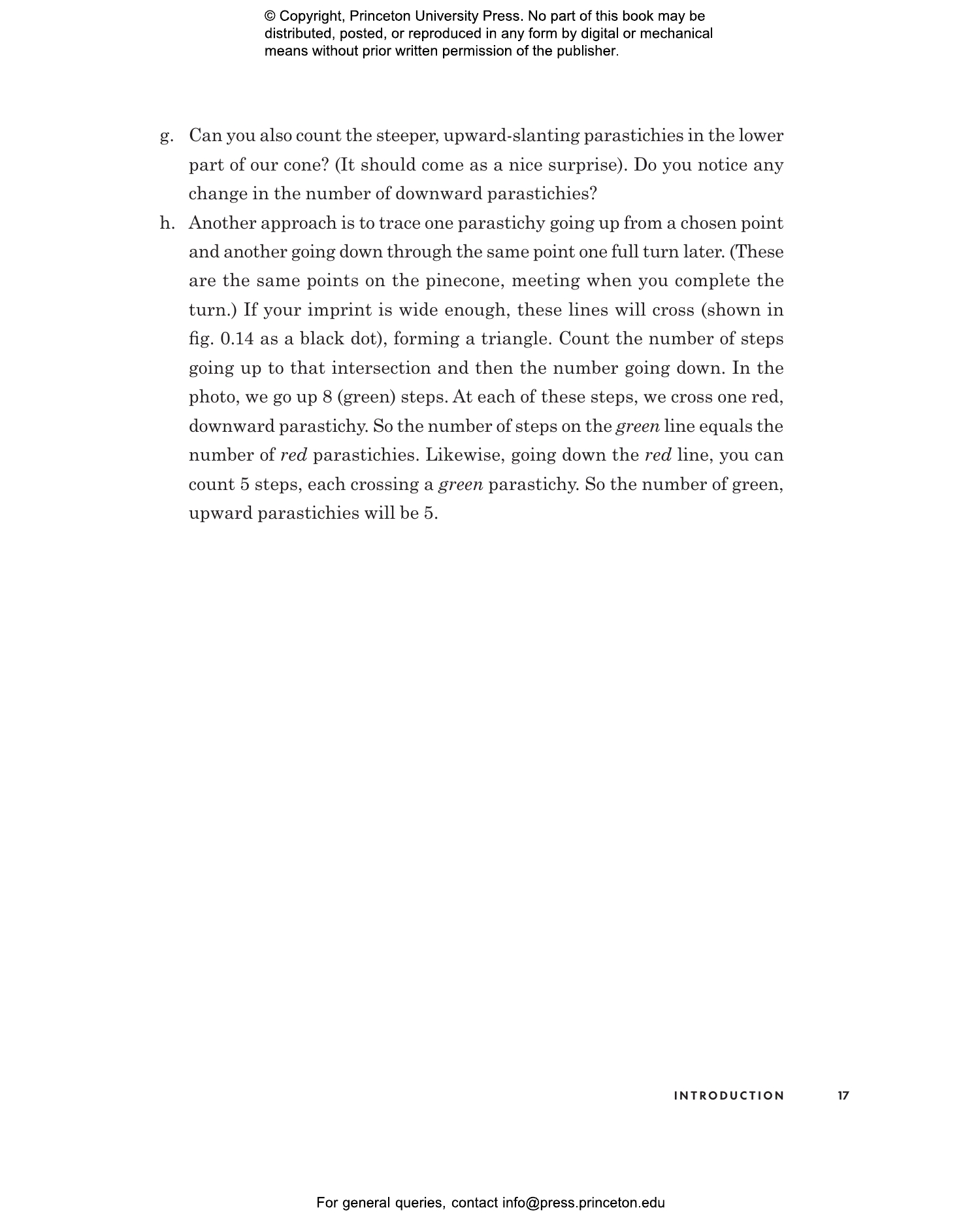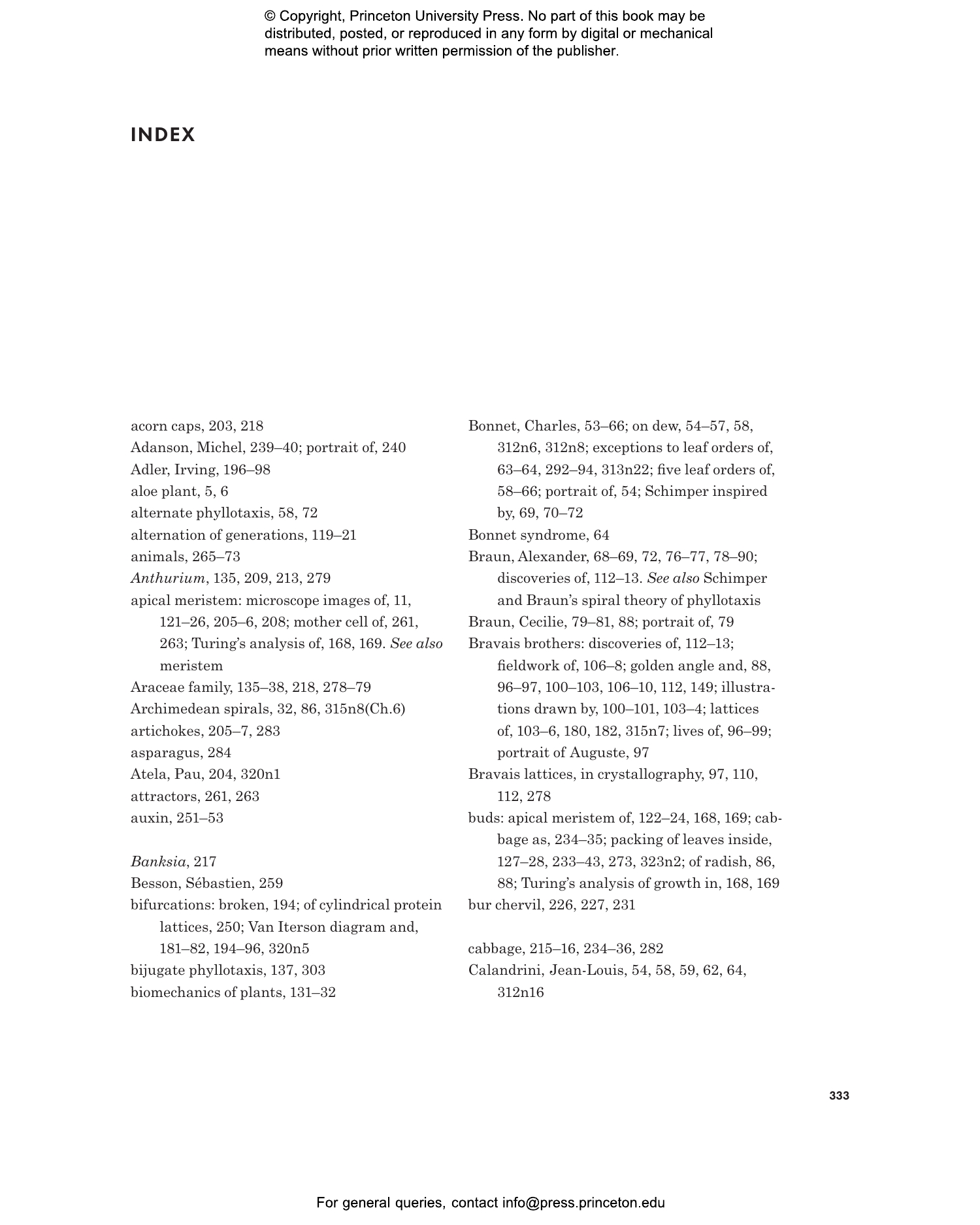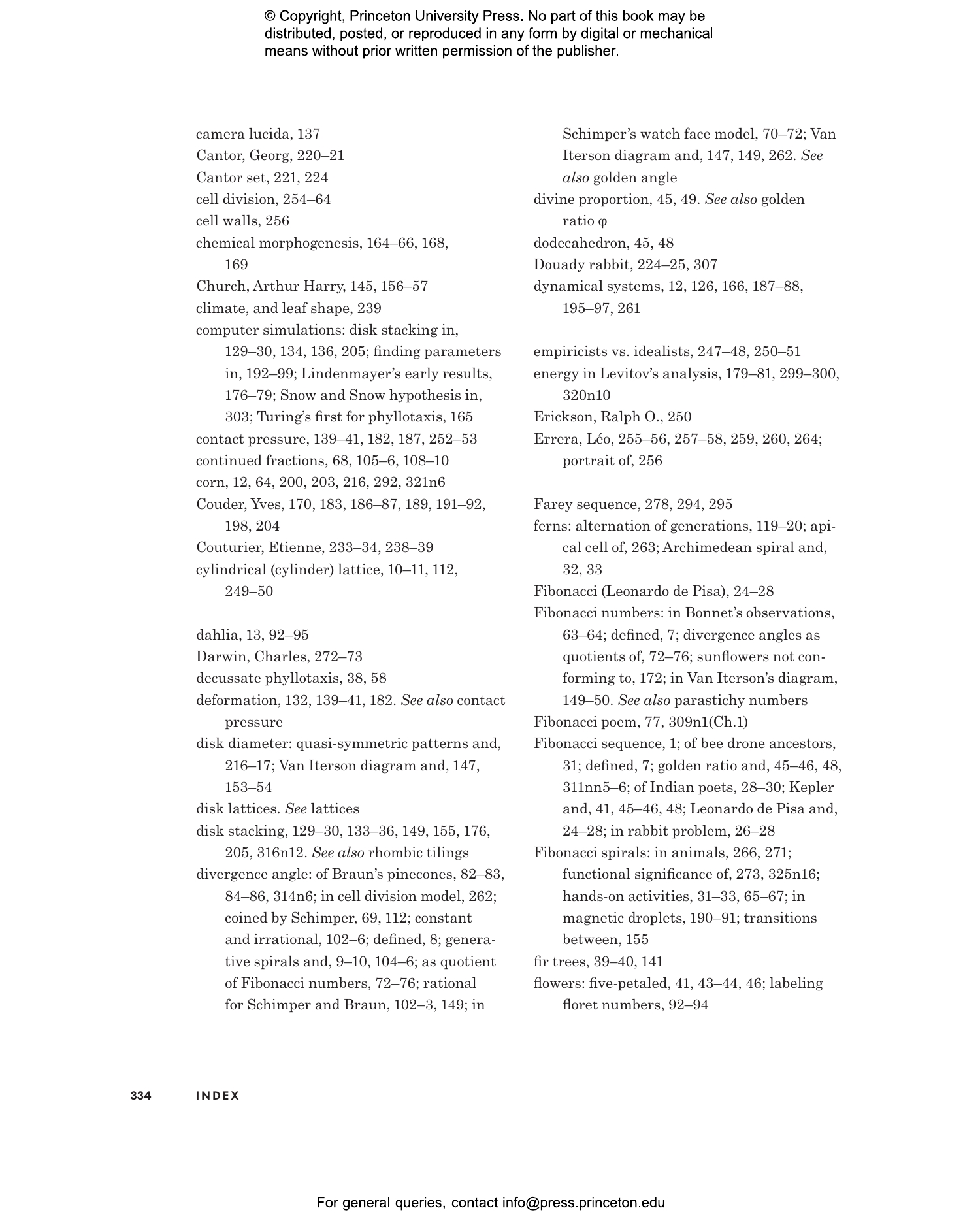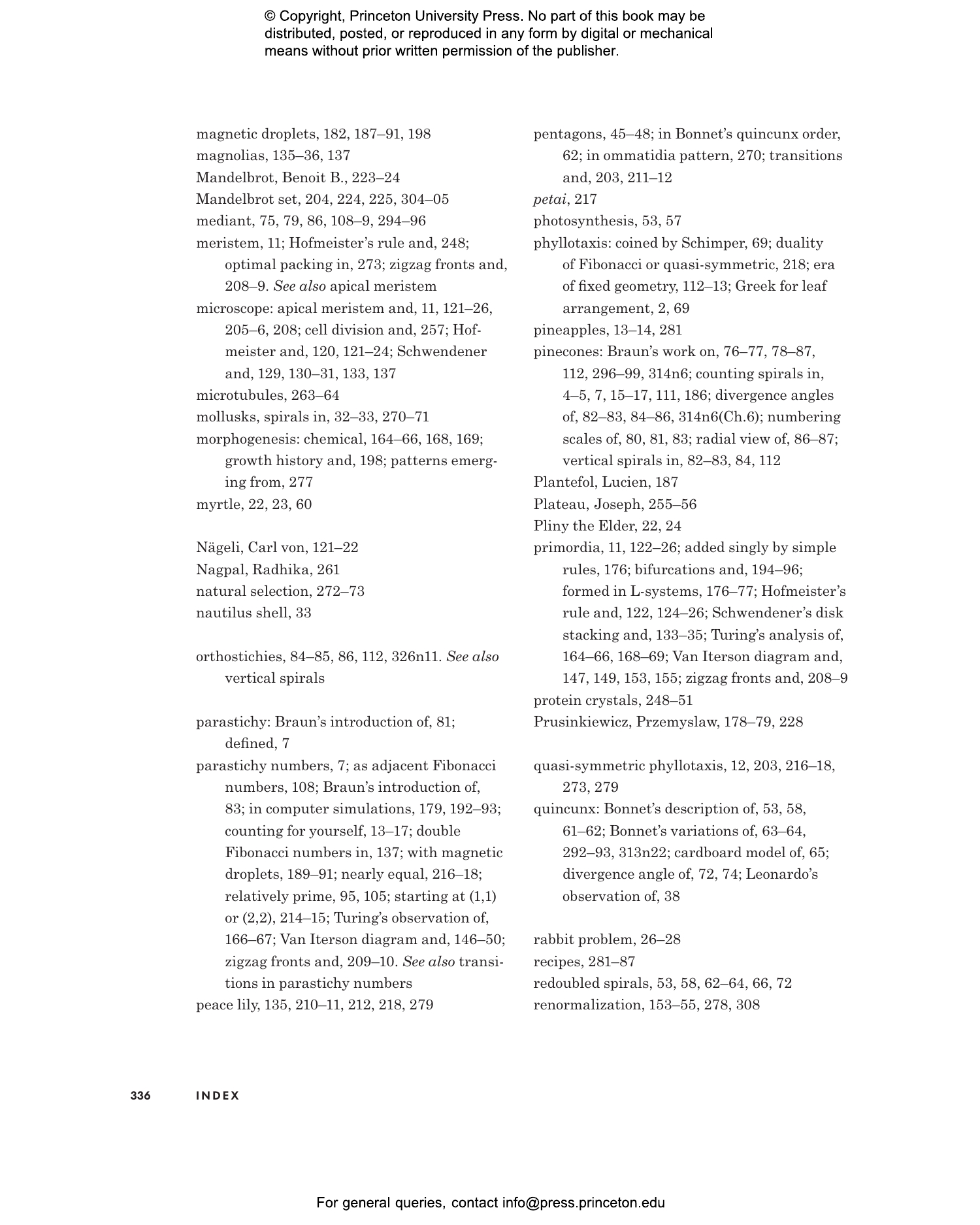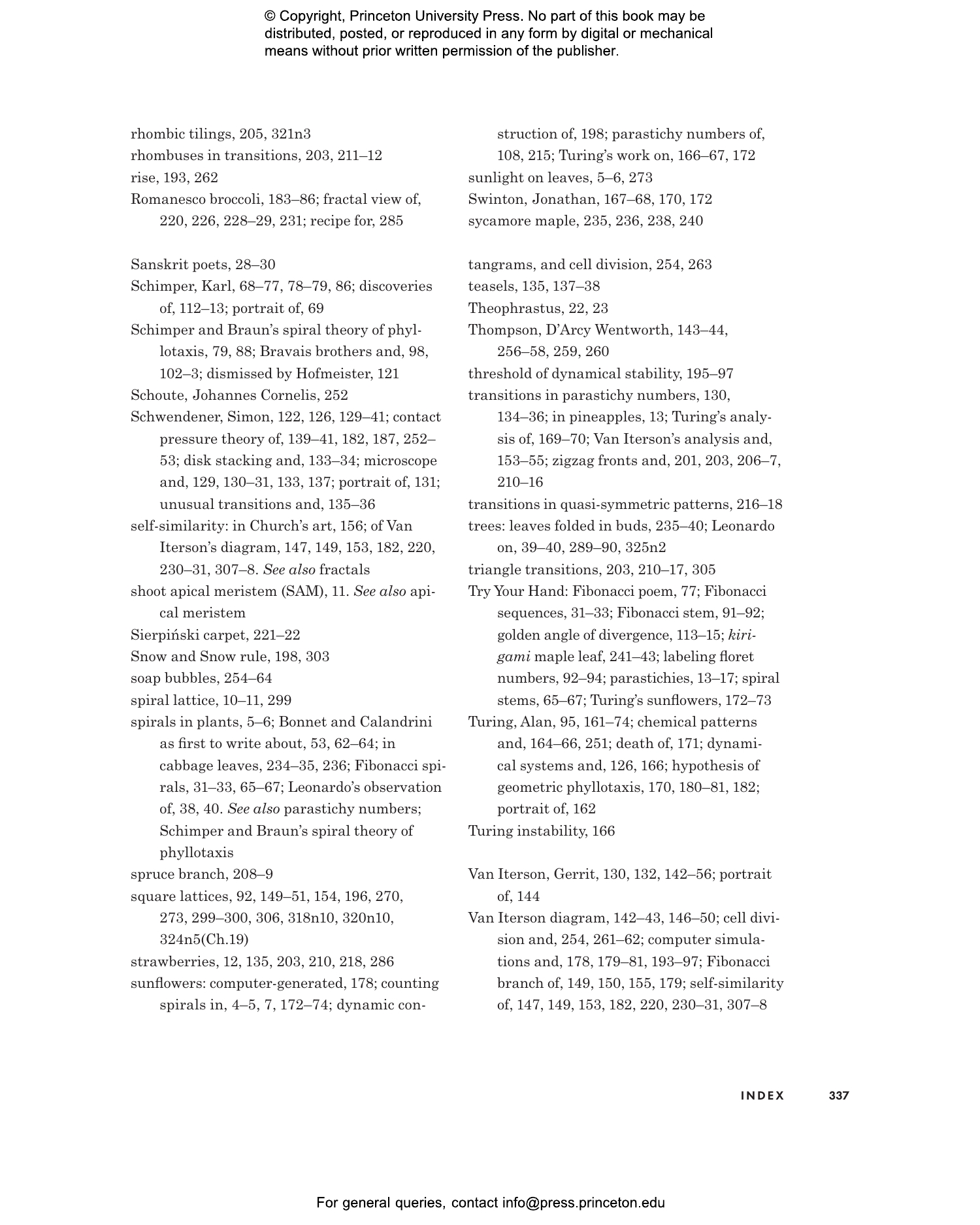Charles Darwin was driven to distraction by plant spirals, growing so exasperated that he once begged a friend to explain the mystery “if you wish to save me from a miserable death.” The legendary naturalist was hardly alone in feeling tormented by these patterns. Plant spirals captured the gaze of Leonardo da Vinci and became Alan Turing’s final obsession. This book tells the stories of the physicists, mathematicians, and biologists who found themselves magnetically drawn to Fibonacci spirals in plants, seeking an answer to why these beautiful and seductive patterns occur in botanical forms as diverse as pine cones, cabbages, and sunflowers.
Do Plants Know Math? takes you down through the centuries to explore how great minds have been captivated and mystified by Fibonacci patterns in nature. It presents a powerful new geometrical solution, little known outside of scientific circles, that sheds light on why regular and irregular spiral patterns occur. Along the way, the book discusses related plant geometries such as fractals and the fascinating way that leaves are folded inside of buds. Your neurons will crackle as you begin to see the connections. This book will inspire you to look at botanical patterns—and the natural world itself—with new eyes.
Featuring hundreds of gorgeous color images, Do Plants Know Math? includes a dozen creative hands-on activities and even spiral-plant recipes, encouraging readers to explore and celebrate these beguiling patterns for themselves.
Stéphane Douady, who has researched plant patterns for thirty years, is a silver medalist CNRS director of research in the Matière et Systèmes Complexes laboratory at Paris Cité University. Jacques Dumais works on plant-inspired technologies as a professor in the Faculty of Engineering and Science at Universidad Adolfo Ibáñez in Chile. Christophe Golé runs the Plant Math Lab at Smith College, where he is a professor of mathematics. Nancy Pick is a science writer whose books include The Rarest of the Rare, telling the stories behind the natural history collections at Harvard University.
"A beautiful book, accessible to mathematically inclined biologists, biologically interested mathematicians, and likely many in between."—Jonathan Shock, Mathemafrica
“At once beautiful, rigorous, and wildly inventive, Do Plants Know Math? is a revelation. It will change the way you look at the world.”—Elizabeth Kolbert, Pulitzer Prize–winning author of The Sixth Extinction: An Unnatural History
“This deeply authoritative, comprehensive, and constantly entrancing book takes us from ancient China to the abstract mathematics of Alan Turing, offering a lesson in finding the beauty and the mystery that resides in the most unlikely corners of nature. Do Plants Know Math? provides a testament to humankind’s imagination, ingenuity, and spirit of inquiry.”—Philip Ball, author of The Self-Made Tapestry: Pattern Formation in Nature
“A wondrous book that intertwines the visual beauty of nature with the logical beauty of mathematics. You will never look at plants or mathematics in quite the same way again. Do Plants Know Math? is readable, informed, imaginative, and steeped in history—I can’t sing its praises highly enough.”—Ian Stewart, author of What’s the Use?
“Geometric shapes, numeric equations, computers, and chemistry—what does all this have to do with the colorful shapes of lovely wildflowers and fruits? There is a relationship between the two, and this book takes us on an entertaining journey of trying to figure out the mystery of exactly what that relationship is. The journey has been going on for more than a thousand years and we still have much to learn about plants, our silent companions. Here are some insights to help us understand them a little better.”—Joan Maloof, author of Treepedia and Nature’s Temples


